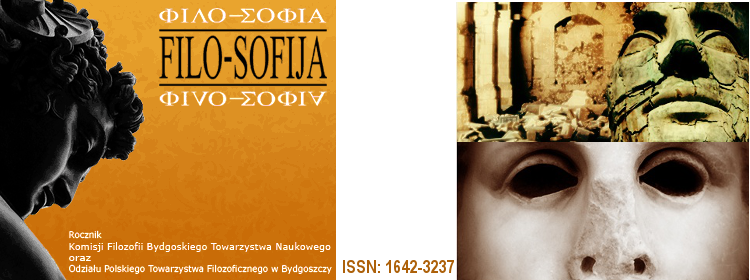TytuŇāem uzupeŇānienia: wczesnonowoŇľytny wz√≥r myŇõlenia naukowego
Abstract
My aim is to supplement Anna PaŇāubicka‚Äôs view of European cultural and historical patterns of thinking, presented in her book The Grammar of European Culture, with a more detailed picture of the thinking pattern established in the early modern philosophy and applied to the study of nature. Galileo Galilei and Ren√© Descartes were among its ‚Äúcreators.‚ÄĚ Galileo isolated scientific reasoning from everyday thinking, which not only cannot explain reality but is even unable to give an adequate picture of the world. Due to Galileo scientific thinking became a blend of speculative and empirical thinking in terms of geometry, analogies between natural phenomena and mechanical devices, and experiments (real and imaginative). His scientific thinking is constructive and idealizational, not contemplative. Descartes laid a foundation for scientific, theoretical and empirical, knowledge of natural reality much more secure than the authority of Aristotle or Archimedes. All this knowledge were to be rationally derived from our indubitable ideas of ourselves and God who guarantees the objective validity of our knowledge; its mathematical part is purely speculative, its physical part is hypothetic and experience is simply our instrument. Descartes expressed in this way a theistic and theocentric nature of early modern science. Due to later changes mathematical thinking replaced the geometrical one, experiments became a practice of manufacturing reality, and divine foundation of scientific knowledge disappeared together with the believe that it is certain, necessary, and indubitable.
PeŇāny tekst:
PDFAdministracja Cytowania | Strony czasopism
